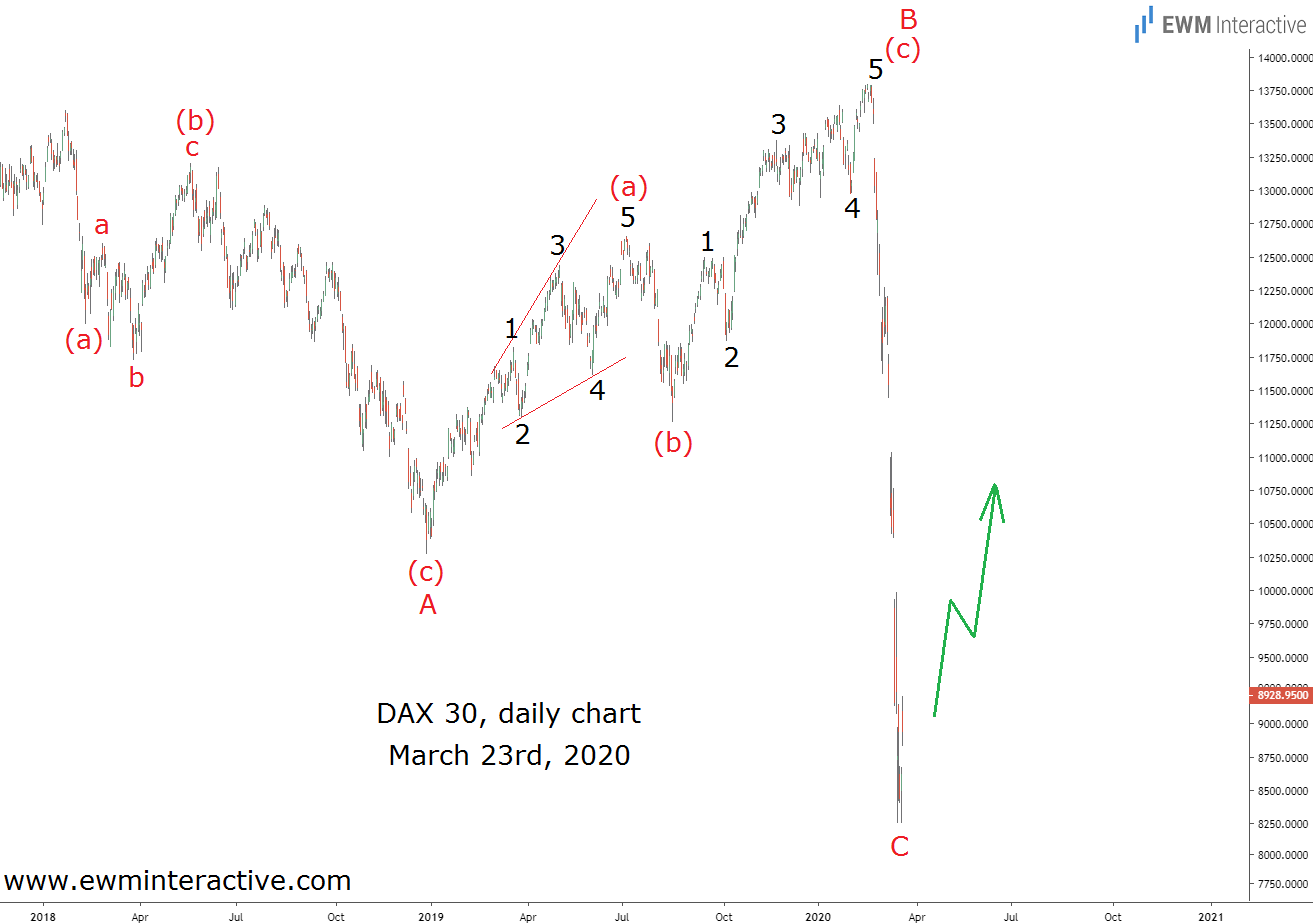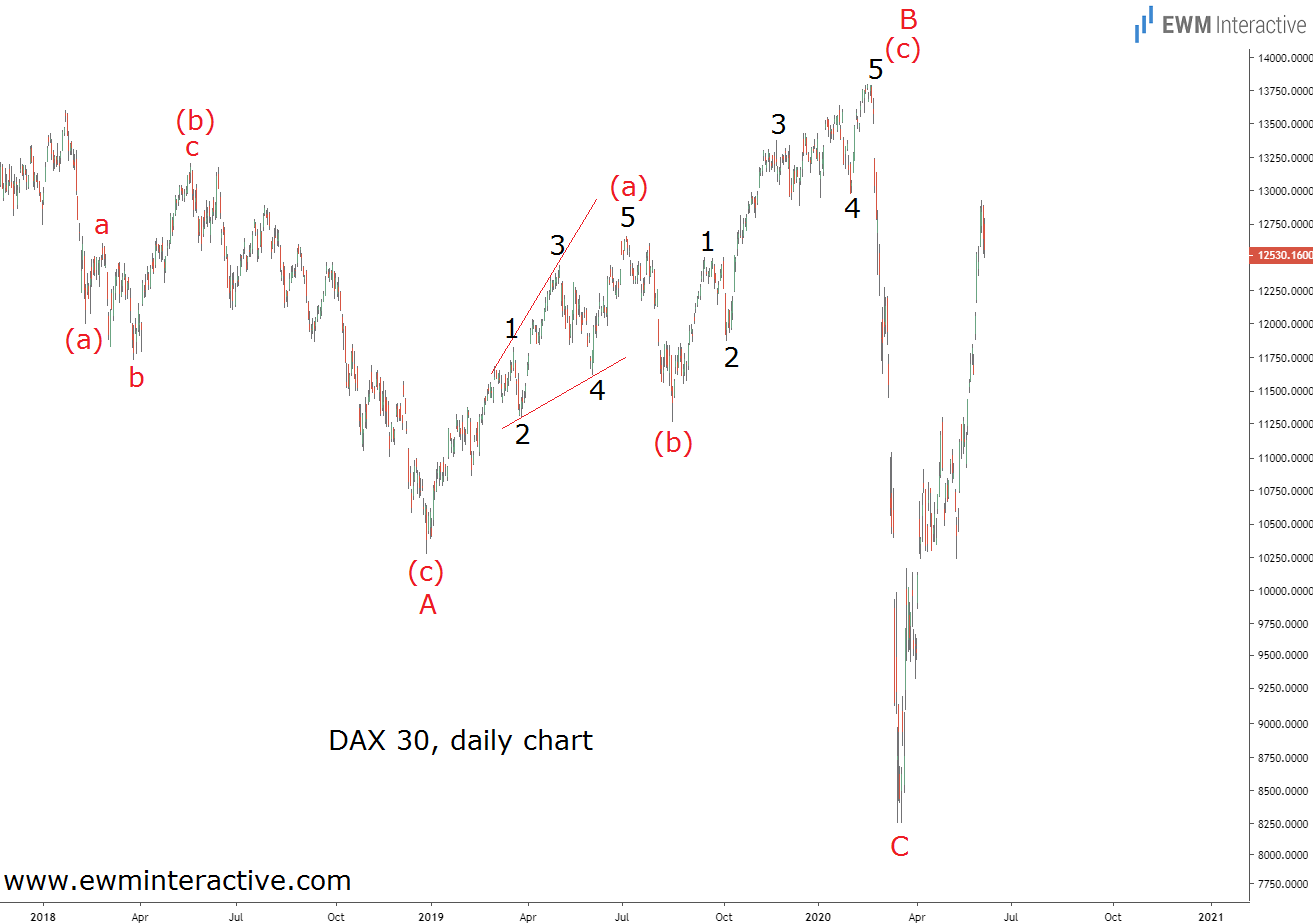The last time we wrote about the German DAX 30, the index was in a free fall. It was March 2nd and the coronavirus selloff was in full swing. The price was collapsing. Fortunately, Elliott Wave analysis helped us anticipate the crash without even taking COVID-19’s impact on the economy into account. The plunge continued for a couple more weeks until it touched 8256 on March 16th.
What followed could hardly be predicted by looking at the information available on the news. New virus cases and deaths in Europe were surging every day. Governments were imposing total lockdowns on entire districts. Businesses were shutting their doors and laying people off indefinitely. Economies were stopped in their tracks. Yet, the German DAX 30 started climbing.
Ahead of the DAX 30 Surge with Elliott Wave analysis
As of this writing, things are still very far from getting back to normal. Q2 is expected to see the worst GDP decline on record. However, the DAX reached 12 913 this week, up 56% from the March bottom.
Although the German index is not among our seven premium instruments, we do have several clients who receive DAX 30 analysis on-demand. Below is a chart we sent to them on March 23rd. It shows that ignoring the news can often lead to better returns in the financial markets.

A week before the end of March, DAX 30’s daily chart revealed a complete expanding flat correction. The pattern was labeled A-B-C, where waves A and B were smaller (a)-(b)-(c) zigzags. The coronavirus crash was so fast and sharp that it couldn’t be counted as anything other than an impulse in wave C.
According to the theory, once a correction is over, the larger trend resumes. Since the DAX was clearly in an uptrend prior to the above-shown retracement, it made perfect sense to expect more strength after it. Being a contrarian at a time when the world seemed to be coming to an end was extremely hard. Yet, that was exactly what the analysis suggested we should do.
Investors Must Keep Their Emotions in Check
So, as COVID-19 was getting worse by the hour and the world’s economy entered a state of self-induced comma, we turned bullish on the DAX 30. The chart below shows how the situation has been developing in the two and a half months that followed.

Once again, the market didn’t follow the news, it anticipated it. In 2009, it started rising before the Recession was over. Now, it didn’t wait for the world to deal with the COVID-19 crisis. It turned up in its darkest hour.
Will there be a second wave of the virus? If yes, how bad will it be? These are both questions we cannot answer. We don’t believe anyone in the world really can, including Dr. Fauci. The good news is that investors don’t need a PhD in epidemiology to be successful.
